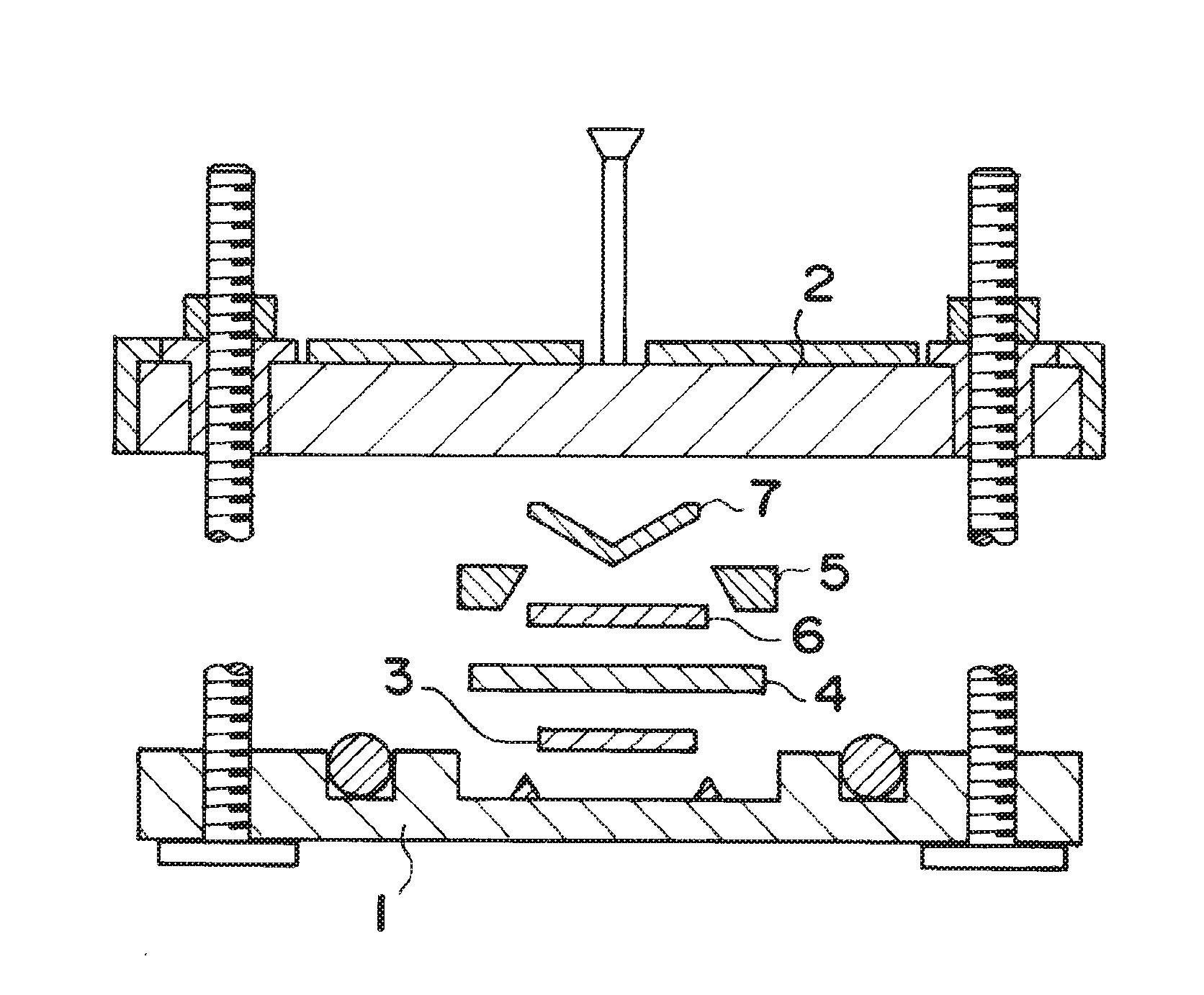Positive Electrode Active Material for Lithium Secondary Cell
- Summary
- Abstract
- Description
- Claims
- Application Information
AI Technical Summary
Benefits of technology
Problems solved by technology
Method used
Image
Examples
example 1
[0146]Lithium carbonate having an average particle diameter (D50) of 7 μm, electrolytic manganese dioxide having an average particle diameter (D50) of 23 μm and a specific surface area of 40 m2 / g, nickel hydroxide having an average particle diameter (D50) of 22 μm, cobalt oxyhydroxide having an average particle diameter (D50) of 14 μm, and aluminum hydroxide having an average particle diameter (D50) of 1.4 μm were weighed such that Li:Ni:Co:Mn:Al in molar ratio became 1.05:0.46:0.21:0.27:0.01.
[0147]A polycarboxylate ammonium salt aqueous solution (manufactured by San Nopco Ltd., SN Dispersant 5468) as a dispersant was added to ion-exchanged water. The amount of the dispersant added was made to become 6% by weight to the nickel hydroxide and the aluminum hydroxide weighed in the above.
[0148]The nickel hydroxide and the aluminum hydroxide were added in the above ion-exchanged water, and mixed and stirred to thereby prepare a slurry having a solid content concentration of 40% by weight...
example 2
[0158]A lithium metal composite oxide powder (sample) was obtained as in Example 1, except for carrying out the drying after the surface treatment in the air at 100° C. for 1 hour, and altering the heat treatment temperature after the surface treatment to 900° C.
example 3
[0159]A lithium metal composite oxide powder (sample) was obtained as in Example 1, except for altering the dispersion to be used for the surface treatment to a dispersion, in which an aluminum coupling agent was dispersed in a solvent, prepared by mixing, with respect to the weight of the lithium metal composite oxide powder, 1.0% by weight of the aluminum coupling agent (Ajinomoto Fine-Techno Co., Inc., Plenact® AL-M) as a surface treating agent and 1.3% by weight of isopropyl alcohol as the solvent, and altering the heat treatment temperature after the surface treatment to 770° C.
PUM
 Login to View More
Login to View More Abstract
Description
Claims
Application Information
 Login to View More
Login to View More - Generate Ideas
- Intellectual Property
- Life Sciences
- Materials
- Tech Scout
- Unparalleled Data Quality
- Higher Quality Content
- 60% Fewer Hallucinations
Browse by: Latest US Patents, China's latest patents, Technical Efficacy Thesaurus, Application Domain, Technology Topic, Popular Technical Reports.
© 2025 PatSnap. All rights reserved.Legal|Privacy policy|Modern Slavery Act Transparency Statement|Sitemap|About US| Contact US: help@patsnap.com


